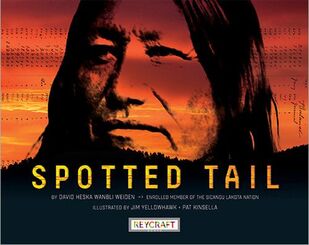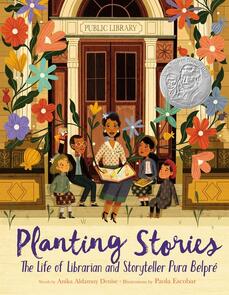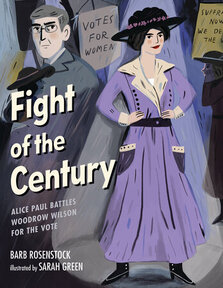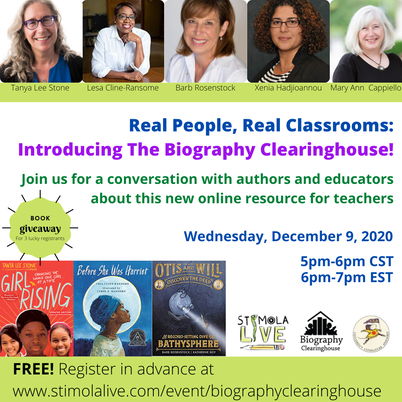By Courtney Shimek, on behalf of The Biography Clearinghouse 2020 has changed our world in indelible ways. From navigating a global pandemic to fighting social injustices embedded into our everyday lives, we find ourselves overwhelmed, exhausted, and uncertain of the future. In response to these crises and the emotions they produce, we have found solace in picturebook biographies that deliver some much-needed perspective. Reading biographies have become a part of our self-care; they provide archives of the past, context for the present, and hope for the future. At The Biography Clearinghouse, we recognize the potential of biographies to shape readers’ understanding of the world, inform their connection to history, and engender empathy. Through our teaching ideas, we suggest ideas and resources for incorporating biographies into curricula. We also recognize that sometimes picturebook biographies come to life most vividly when read-aloud with young readers. As we maintain our "new normal" of vacillating between online, hybrid, and in-class instruction, reading aloud continues to be a constant beacon of inspiration and connection in our teaching. Our youth are navigating the same chaotic and ever-changing world; given that biographies model the complexities of this world, sharing these perspectives with youth is vital. As such, I share here 3 tips for reading biographies aloud and a few illustrative examples of high-quality biographies. Tip #1: Discuss the Visual Features  Picturebooks are unique artifacts where readers gain information not only from words but also from images. The visual features of biographies provide insights into the emotional experiences of distinctive individuals and offer a deeper understanding of humanity. As you read biographies aloud, begin examining the artistic elements (e.g., design and composition, font styles, use of color, artistic mediums, etc.) and see what you discern about the featured individuals, their emotions, and their experiences. For example, from the beautiful mixed media artwork in Spotted Tail (Weiden et al., 2019), we see how the history of the Lakota people connects to present-day issues through striking photographs, art, textural elements from nature, and quotes. Though Spotted Tail has a text-heavy narrative, the design and combination of photographs and art from Jim Yellowtail and Pat Kinsella provide readers numerous points of discussion and a perspective worth including in your read-aloud rotation. Additionally, in It Began With a Page: How Gyo Fujikawa Drew the Way (Maclear & Morstad, 2019), Morstad’s illustrations show the reader the detail and sense of color Fujikawa used in her work, and real photographs of her family are included throughout the book. In addressing the visual features of books with readers, we learn about people’s beliefs, histories, cultures, and emotions, and learn more information than from the words, alone. Tip #2: Back Matter Matters  Often, when we begin a read-aloud we skip to the beginning of the narrative and stop at the end, but creators of contemporary biographies share exceptional amounts of information in the peritextual elements, or everything in the book which is not the actual narrative. Instead of stopping your read-aloud at the end of the narrative, share some of the information included in the back matter such as authors’ and illustrators’ personal connections to the content, where they sourced research materials, and their creative processes. For example, in Planting Stories: The Life of Librarian and Storyteller Pura Belpré (Denise & Escobar, 2019), Denise provides descriptions of books by Pura Belpré, as well as films, books, and collections about Pura Belpré for further study. Similarly, in A Place to Land: Martin Luther King, Jr. and the Speech that Inspired a Nation, Barry Wittenstein and Jerry Pinkney (2019) provide notes expanding upon their decisions, short biographies about other civil rights leaders, along with sources and a bibliography. Biography creators also include additional content through the book jacket, endpapers, and their dedications. Sometimes, the back matter or other peritextual features might be more text-heavy or smaller in size than the narrative. We suggest projecting these features or displaying them on an interactive whiteboard so that these peritextual features can be explored and discussed collectively. When we only read aloud the primary narrative, we miss out on information that contextualizes the biography, describes the creative process, and inspires readers to search out additional sources. Tip #3: Revisit Writer’s Language  Biographers don’t just share events with readers, they share the essence of a person’s life. After you read a biography aloud, reread the book like a writer and examine how the authors’ word choices shape your understandings of a person, place, or event. In Fight of the Century: Alice Paul Battles Woodrow Wilson for the Vote (Rosenstock & Green, 2020), for example, Rosenstock structures her biography as a boxing match between Alice Paul and Woodrow Wilson. By portraying major events as rounds and including commentary from fight announcers (e.g., “This fight determines whether the women of the United States can vote, folks!”), readers experience how progress is often a battle of wills and experience what a fighter Alice Paul was. Additionally, Nelson’s use of western idioms (e.g., “plain as the ears on a mule” and “fit like made-to-measure boots”) in Let ‘er Buck!: George Fletcher, the People’s Champion (Nelson & James, 2019), drops the reader into the cowboy language and culture of Pendleton, Oregon. Through similes and energetic descriptions of bull riding, we experience how Fletcher was discriminated against and, yet, became a hometown hero. Biographers’ language choices provide us with new ways of looking at historical events, embed us in particular moments of time, and supply inspiration for our own writing processes.
How do you read aloud biographies? We would love to hear your tips through our email, [email protected], or through comments on Facebook and Twitter #theBiographyClearinghouse. No matter what 2021 brings, we know we will navigate the uncertainty equipped with high-quality, multidimensional biographies and share the reassurances and possibilities they provide through read-alouds. References Denise, A. A., & Escobar, P. (2019). Planting stories: The life of librarian and storyteller Pura Belpré. HarperCollins. Maclear, K., & Morstad, J. (2019). It began with a page: How Gyo Fujikawa drew the way. HarperCollins. Nelson, V. M., & James, G. C. (2019). Let ‘er buck!: George Fletcher, the people’s champion. Carolrhoda Books. Rosenstock, B., & Green, S. (2020). Fight of the century: Alice Paul battles Woodrow Wilson for the vote. Calkins Creek. Weiden, D. H. W., Yellowtail, J., & Kinsella, P. (2019). Spotted tail. Reycraft Books. Wittenstein, B. & Pinkney, J. (2019). A place to land: Martin Luther King Jr. and the speech that inspired a nation. Neal Porter Books Courtney Shimek is an assistant professor at West Virginia University and has been a member of CLA since 2015. Comments are closed.
|
Authors:
|
CLA
About CLA
|
Journal of Children's Literature
Write for JCL
|
ResourcesCLA-sponsored NCTE Position Statements
|
Members-Only Content
CLA Video Library
|
© COPYRIGHT 2018.
ALL RIGHTS RESERVED |


 RSS Feed
RSS Feed